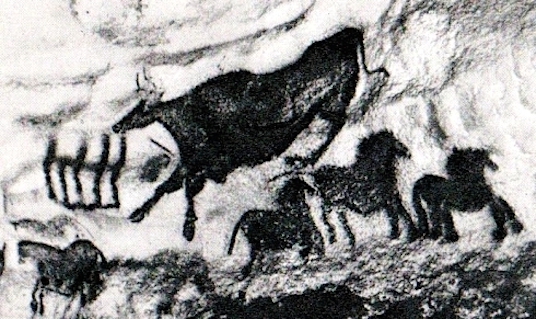Museum of the Origins of Man
THE MOVEMENT IN THE UPPER PALEOLITHIC TWO-DIMENSIONAL ART
Paleolithic man fed on meat and vegetables as today.
He procured meat by hunting and searched and gathered vegetables competing with other herbivorous animals.
Hunting was in competition with other predatory animals, which were not few, and everyone, including man, had their own strategies.
Herbivorous animals, object of hunting, as soon as they saw man ran away, because they knew that they could be his prey, as they knew that they could be prey of other carnivorous animals.
Man in the various regions had different hunting strategies and also weapons of various types, but he knew all the habits of the animals he hunted.
The animals run away as fast as they could because man was their enemy. It is likely that the depictions of the movement of the running animals have to be related to the difficulties in capturing them.
However, moving images are a characteristic of two-dimensional art, not only of the upper Paleolithic hunters, but also of post-Paleolithic hunter peoples, who later added the human figure always in motion.
From a typological point of view in art, the movement is important because it is prevailing. But in the two-dimensional Paleolithic art they are also representations of animals without movement, that on the walls of the caves seem "flying dead".
 Fig. F41) Painting on cave wall with bull and running horses.
Fig. F41) Painting on cave wall with bull and running horses.
Material culture: Magdalenian (Upper Paleolithic).
Location: Lascaux cave.(France).
Note the elegant stylistic deformation of the wild animals and the great effectiveness of the movement of the bull (perhaps a female) and of running horses.
Also noteworthy the "abstract" sign facing the bull.
NEXT
Index
HOME PAGE
Copyright©1999-2020 by Museum of the Origins of Man, all rights reserved.

